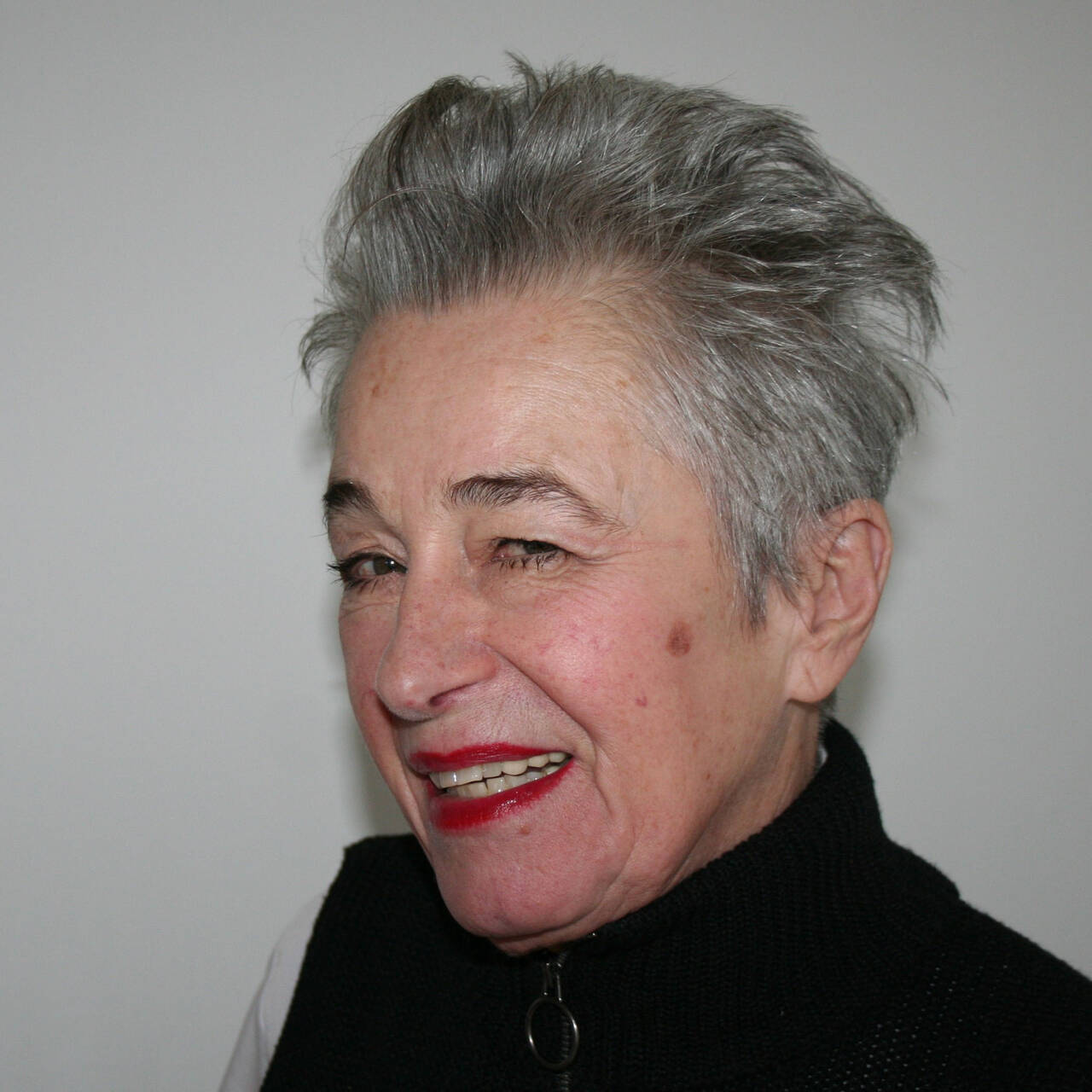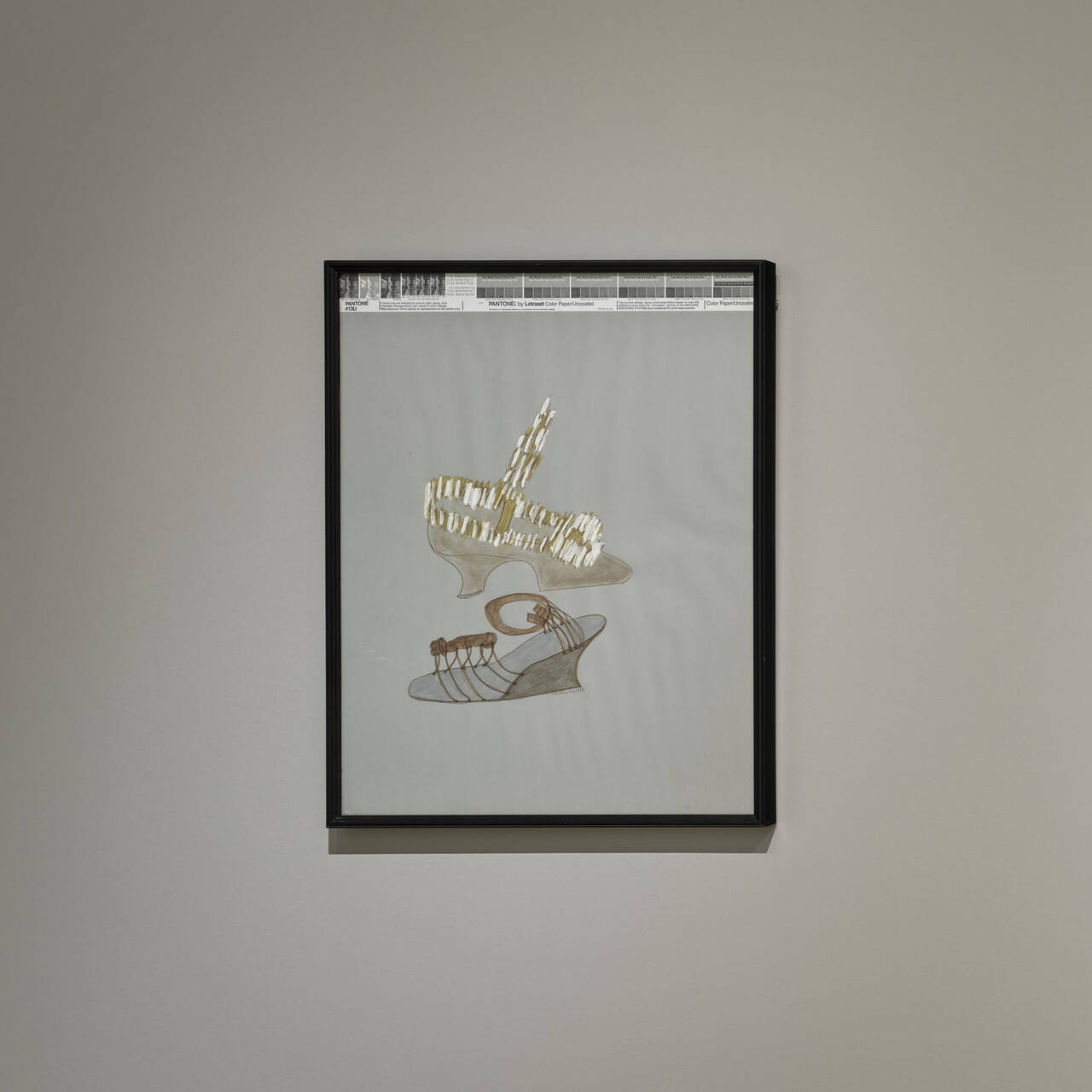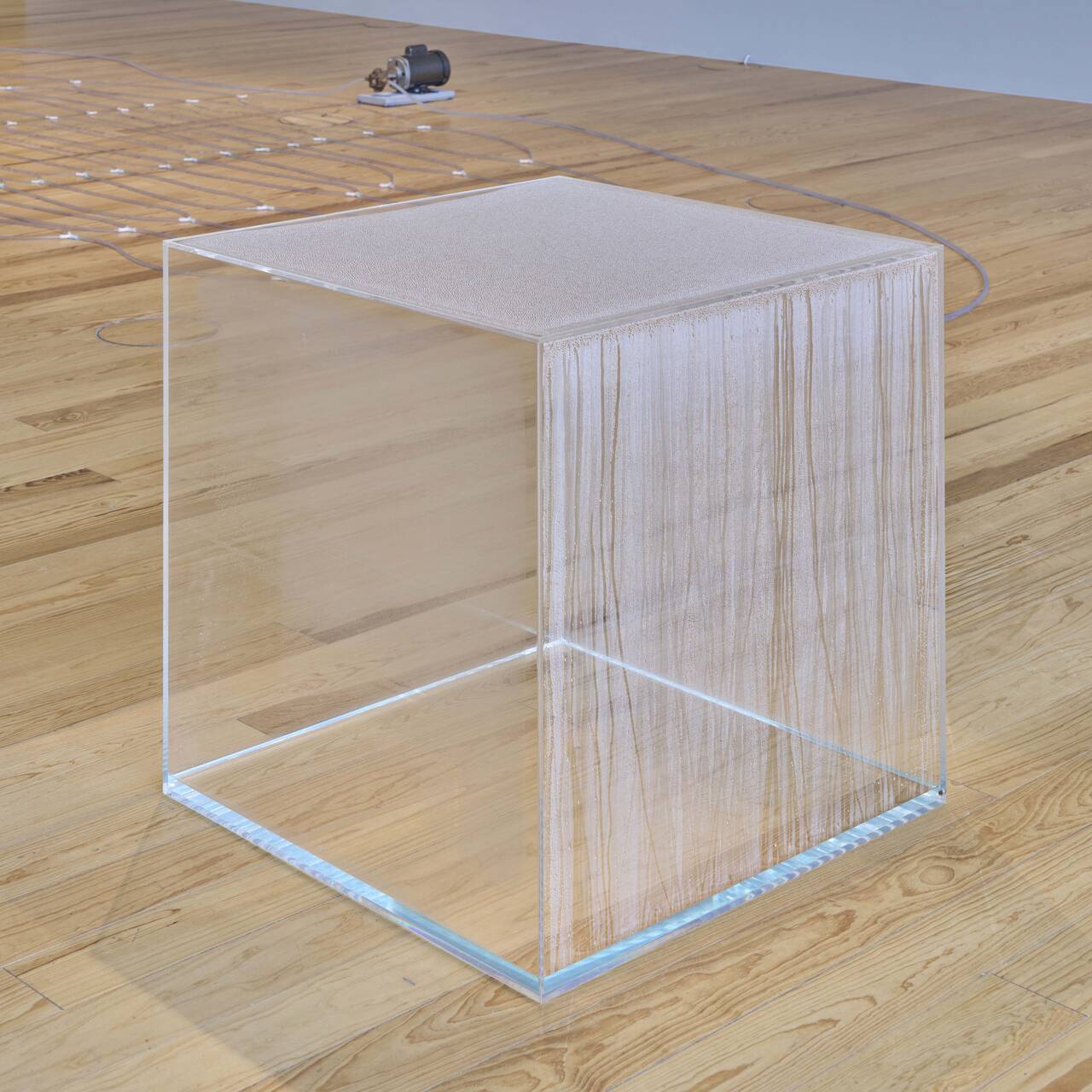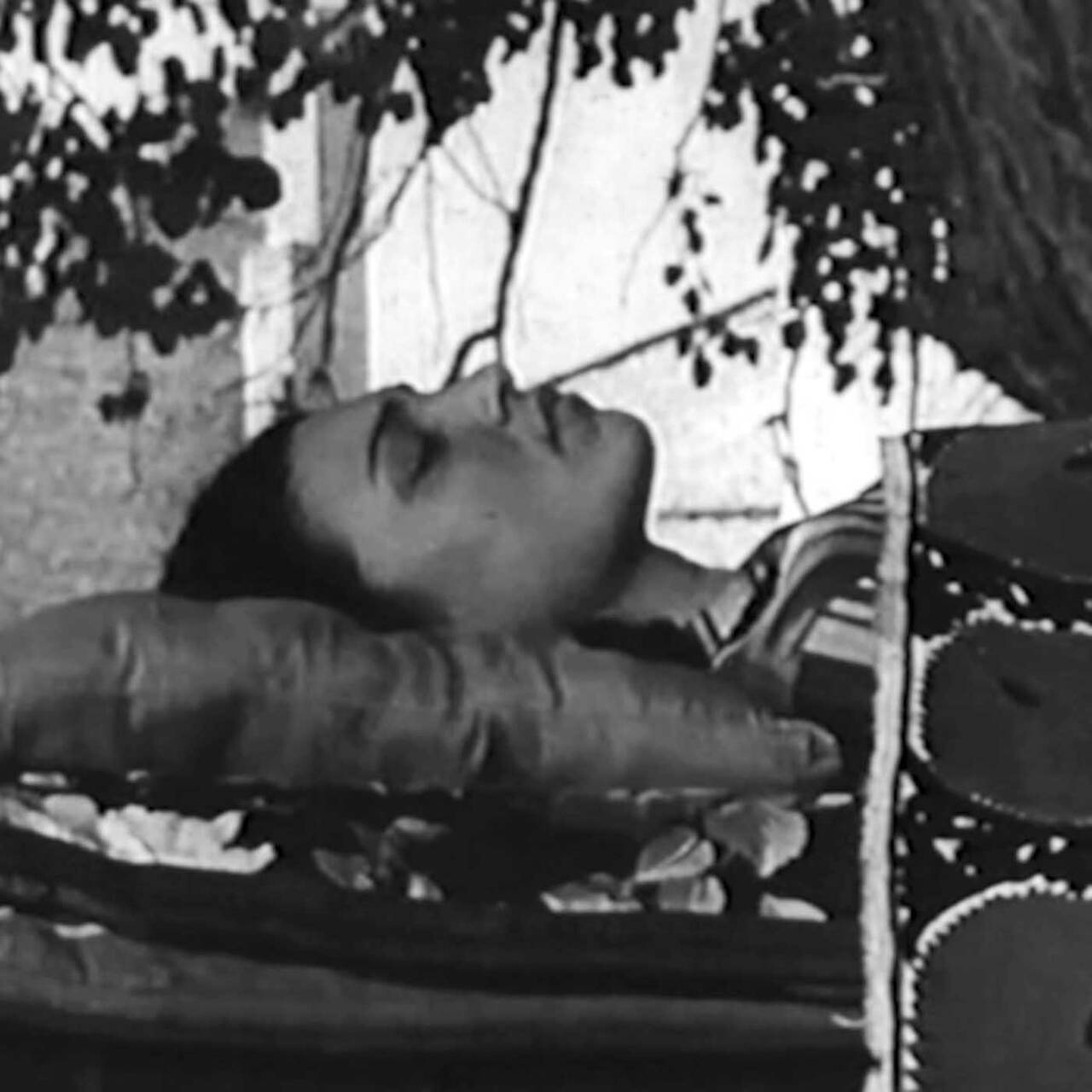How Jeppe Hein promotes togetherness with his art and why this is so important right now. A conversation about mindfulness, life crises and the 90s in Frankfurt's creative scene.
Jeppe Hein has just returned from a holiday with his family. It was a strange experience, he admits: “Because of Corona, we were together all the time for two or three months even before the holiday, particularly recently, since I’ve been working from home so much. I’m not complaining at all, it was a really great holiday…and now the art world is slowly coming back to life too…”
On that note: How were you spending your time before your holiday? Were you able to work effectively during the lockdown?
The first months of the lockdown were very hard work for me. I spent a lot of time sitting at the computer, planning and coordinating. A lot of museums were asking: Can you make a little video for us? Can you do this? Can you do that? And I completely understood this, because the exhibition venues had to explore how they could bridge the gap with the few opportunities available to them. Looking back, I’m certain there will be major changes, also long term, in the way we travel, how we make arrangements with one another, and how we get together digitally too.
With regard to my own artistic process, I also took at how I could undertake a thorough scrutiny, a look in the mirror: What do I actually want in my life? What do I want to express, to leave behind? What experiences do I want to pass on?

To a certain extent, you’ve already experienced an exceptional situation like this: In 2009 you suffered from so-called burnout, and you addressed the condition and the way you dealt with it publicly.
That was already a very difficult experience in my life. A real crisis: fear, depression… Because I simply fled from myself, went all over the place, all over the world. I was seeking love and recognition outside of myself. After the crisis I did a lot of things differently: starting with yoga, mindfulness exercises, spending a lot of time outside in nature. Observing the way the leaves move, those sorts of things. Being in the here and now. It was a long road, finding what I had looked everywhere for within myself. Previously my mind had always been on the past or the future, already thinking about the next opening. My wife and my children were always there for me. We’ve experienced a great deal together as a family. If a situation like that comes along now, then I’d say I’m ready for it.
Looking at your art, it seems there is a definite distinction between before and after the crisis. Was that a conscious decision, to do things differently?
With regard to the art: The form was not that different at all. Mirrors and water, for example, are materials I’ve often worked with before, but the themes have changed, of course. At some point I even started to paint a great deal, thousands of watercolors, and also to write: What I feel, who I am, what thoughts I’m having, even just having a bit of fun. Positive fun, I’d say. About myself, not about others. Previously I never really enjoyed what I had, that’s something I have gradually learned. Slowly, I discovered that I have a spiritual approach to my work too, or rather I already had it – I’ve always done a lot of things very intuitively. Funnily enough, it’s now a lot less intuitive; I have far clearer ideas.



Breathing, painting strokes, revealing moods: Some really love it – “Jeppe is a fairy-tale prince”, wrote an Amazon reviewer of your exhibition catalogue at the Kunstmuseum Wolfsburg, for instance. Others wonder what differentiates your art from motivational slogans. Can you explain that? Or are these questions of no interest to you?
You can’t make art for everyone of course. I think that at the moment you can simply see that my art touches people’s hearts. That’s something some critics and museum curators don’t like, but I make art for people. You can’t allow yourself to be influenced too much by its reception. You just have to do it!
I don’t think I’m a genius or a particularly special artist, but I do think, even if this now sounds somewhat spiritual, that the world has a consciousness, an “art cloud”. Sometimes, you get permission to bring a few things down from it and to make them accessible. I get ideas and make something out of them. I studied art and I make art, I think. I believe art is a tool that opens hearts, but there are others, too – yoga, for example. Now, in the Schirn Rotunda, I’ll be there to talk to visitors, too. Then we can gladly discuss the question of how you actually show your feelings.
If you take a look around, you see we could all use greater understanding of one another. We have been shut in for a while, either alone or with our loved ones, and this situation has forced us into self-reflection, not only intellectually, but also emotionally. I believe a lot of people have learned a great deal about themselves, and not just nice things, incidentally…
I believe art is a tool that opens hearts.
Under the title “Today I feel like”, you will now be creating a work jointly with visitors at the Schirn in Frankfurt. What’s going to happen there?
First, people will come in and there will be a small coffee stand – its name in Danish means “laugh”: Smil Kaffee. There, people can drink a coffee, in the Schirn. At the top of the Rotunda I have already painted lots and lots of circles to define the structure. Then there will be a small introduction, everyone gets a paint pot and a brush, and we all go up to the top. There, people can choose a circle and paint what they’re currently feeling within it.
My idea is this: I suddenly discovered lots of feelings that I don’t really know about, so I asked myself: What is that anyway? What can I call it? That’s the case for all of us. We all have difficulty communicating what we’re feeling. I think it’s important to open up a museum to the people and to say: Be part of this project and show us and the world exactly how you feel!

During the 1990s you studied at the Städelschule under Kasper König. His son Johann is now your gallerist. What was your impression of Frankfurt and the academy environment back then?
The Städelschule and Frankfurt in general were really important for me, simply to learn new approaches to art. At that time Frankfurt was already very interesting, Portikus specifically was quite a hotspot, while the Schirn and the MMK were quite new. Then I got to know a lot of great colleagues while playing football, Tobias Rehberger for example. That was already a milestone for me, starting out there, because there was just so much creative energy. It was also here that I got to know Johann, on a bench in front of the Frankfurter Kunstverein. Incidentally, I was already exhibiting in the Schirn at the time, in an exhibition curated by Martina Weinhart, so we’ve known each other quite a while. It’s nice to come back.
What’s your view with regard to authorship? Is the work that will be produced there your work? If the visitors become part of your work then is it a joint work?
I think it’s a joint work, but led by me. I need the visitors, the audience, and I’m excited to see how it will turn out. I also hope that a lot of people come and give us an expression of their feelings. It’s not a work I will sell, of course, but at some point the work might appear in a catalogue with the caption: “By Jeppe Hein and 400 wonderful people”. Or: “400 different people’s feelings”.




